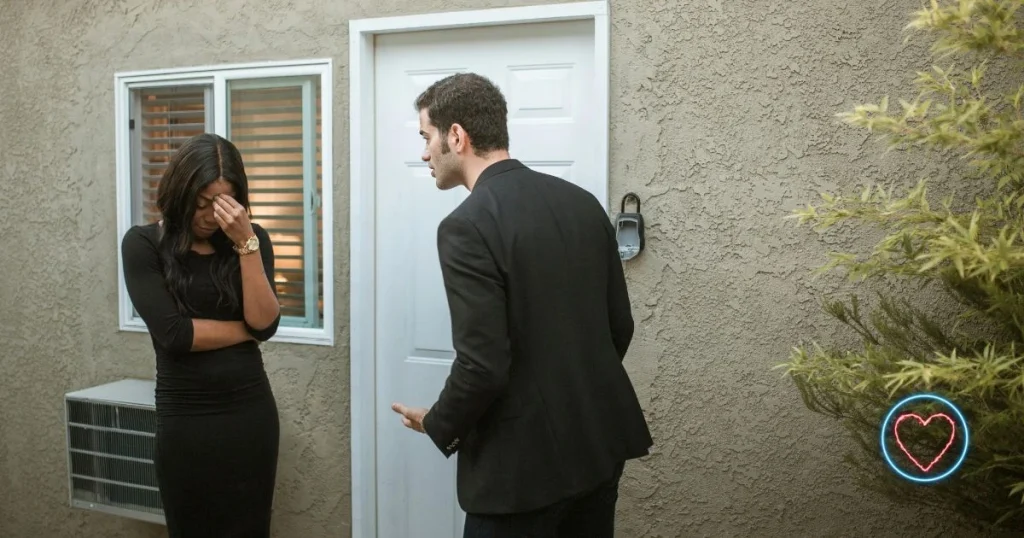Long-distance relationships (LDRs) have become increasingly common in today’s globalized and digitally connected world. Whether due to work, education, family commitments, or unforeseen circumstances, couples often find themselves navigating the challenges of maintaining love and connection across miles, time zones, and busy schedules.
While long-distance relationships can be difficult, they’re by no means doomed. With the right mindset, strategies, and communication habits, couples can not only survive but thrive, building trust, intimacy, and a deep emotional bond despite the physical separation.
If you’re currently in a long-distance relationship or considering one, this guide will help you understand how to handle long-distance relationships successfully, highlighting practical tips and essential insights to keep your connection strong and fulfilling.
Understanding the Challenges of Long-Distance Relationships
Before diving into solutions, it’s important to acknowledge the unique challenges that long-distance relationships present:
- Physical Separation: Lack of daily physical presence can cause feelings of loneliness and longing.
- Communication Gaps: Time zone differences and busy schedules can limit interaction and create misunderstandings.
- Trust Issues: Distance may fuel insecurity or jealousy if boundaries aren’t clear.
- Emotional Stress: Uncertainty about the future and absence of shared experiences can heighten anxiety.
- Social Isolation: Missing out on important events and shared social circles can make partners feel disconnected.
Knowing these hurdles helps couples prepare and find ways to overcome them.
1. Prioritize Open and Honest Communication
Clear, honest communication is the lifeblood of any relationship — doubly so in a long-distance one. Because you can’t rely on physical cues or spontaneous moments, you must make the effort to express your feelings, concerns, and daily experiences intentionally.
- Set Communication Expectations: Agree on how often and when to communicate, balancing daily check-ins with space for independence.
- Use Multiple Channels: Mix texts, phone calls, video chats, voice notes, and even handwritten letters to keep things fresh and personal.
- Be Transparent: Share your worries or insecurities openly to avoid misunderstandings or assumptions.
- Practice Active Listening: When you do connect, give your full attention and validate each other’s feelings.
Remember, communication isn’t just about quantity but quality. Meaningful conversations build intimacy and trust.
2. Establish Trust and Set Boundaries
Trust is the foundation of any successful long-distance relationship. Without it, doubts and jealousy can fester, undermining your connection.
- Be Reliable: Keep promises and be consistent with communication.
- Avoid Ambiguity: Define exclusivity and what is acceptable behavior, especially concerning interactions with others.
- Respect Boundaries: Agree on boundaries regarding social media, friendships, and communication with exes or new acquaintances.
- Reassure Each Other: Regularly express your commitment and appreciation to ease anxieties.
Trust grows over time through consistent actions and mutual respect.
3. Create a Shared Vision for the Future
Long-distance relationships work best when both partners have a clear, shared goal and timeline for their future together. This provides motivation and hope during tough moments.
- Discuss Long-Term Plans: Talk about when and how you might eventually live in the same place.
- Set Milestones: Plan visits, trips, or special events to look forward to.
- Align Life Goals: Ensure your values, career aspirations, and lifestyle desires are compatible.
- Stay Flexible: Life can throw curveballs; being adaptable keeps the relationship resilient.
Having a clear sense of purpose turns distance into a temporary challenge rather than an indefinite state.
4. Keep the Romance Alive, Creatively
Physical distance doesn’t mean the romance has to fade. In fact, many couples discover new ways to nurture intimacy and affection.
- Send Thoughtful Gifts: Surprise your partner with meaningful presents, handwritten letters, or care packages.
- Plan Virtual Dates: Watch movies simultaneously, cook the same recipe while video chatting, or play online games together.
- Share Daily Moments: Send photos or voice messages about your day to feel involved in each other’s lives.
- Celebrate Special Occasions: Make birthdays, anniversaries, and holidays special, even from afar.
Creativity in romance keeps your connection vibrant and emotionally satisfying.
5. Cultivate Independence and Personal Growth
One of the hidden benefits of long-distance relationships is the opportunity for personal growth and independence. When done right, distance can make each partner stronger and more self-aware.
- Pursue Your Interests: Use the time apart to focus on hobbies, education, or career development.
- Build a Support System: Maintain friendships and family relationships that nourish you.
- Practice Self-Care: Pay attention to your mental and physical health.
- Reflect on the Relationship: Assess your needs and feelings regularly to ensure you’re both happy.
A healthy long-distance relationship balances togetherness with individual fulfillment.
6. Manage Conflict Effectively
Disagreements are inevitable in any relationship, but long-distance conflicts can feel more intense because you lack physical presence and non-verbal cues.
- Address Issues Promptly: Don’t let resentment build up.
- Use “I” Statements: Express how you feel without blaming.
- Avoid Texting Angry Messages: Sensitive conversations are best held via voice or video.
- Practice Patience: Give each other time to cool off and reflect.
- Seek Compromise: Find solutions that respect both partners’ needs.
Handling conflict constructively strengthens trust and connection.
7. Plan Regular Visits and Quality Time Together
Physical reunions are essential in maintaining a long-distance relationship. They help reaffirm your bond, create new memories, and reduce feelings of isolation.
- Schedule Visits in Advance: Having something concrete to look forward to keeps motivation high.
- Make Visits Count: Prioritize quality time and meaningful activities over rushed schedules.
- Be Present: Put away distractions and focus entirely on each other.
- Discuss the Visit Afterwards: Reflect on what worked and what could improve for next time.
Regular visits balance the emotional gap created by distance.
8. Use Technology Wisely—but Don’t Overdo It
Technology is a blessing for long-distance couples, but it also comes with pitfalls.
- Embrace Video Calls: Face-to-face interaction beats texting for emotional connection.
- Don’t Rely Only on Social Media: Personal conversations matter more than public posts.
- Avoid Over-Texting: Constant messaging can become exhausting or create misunderstandings.
- Respect Downtime: Allow space for each other’s daily routines and responsibilities.
Use tech as a tool to enhance your connection, not replace real emotional engagement.
9. Build a Supportive Network
Having a support system outside the relationship is important for long-distance couples.
- Talk to Friends and Family: Share your experiences and seek advice or comfort.
- Join Long-Distance Communities: Online forums or groups can provide encouragement and tips.
- Consider Counseling: If challenges feel overwhelming, couples therapy (even online) can help.
Support from others helps you navigate the emotional complexities of long-distance love.
10. Keep Hope Alive During Difficult Times
Every relationship faces ups and downs, and long-distance ones can feel especially hard during times of stress or uncertainty.
- Remind Yourself Why You’re Together: Reflect on the qualities and love that brought you together.
- Focus on What You Can Control: Rather than obsessing over the distance, invest in your communication and connection.
- Celebrate Small Wins: Appreciate progress, no matter how minor.
- Stay Positive and Patient: Trust that challenges are temporary and growth is possible.
Hope and optimism sustain couples through the toughest phases.
11. Know When It’s Time to Reevaluate
While many long-distance relationships flourish, some may face insurmountable challenges. It’s important to periodically assess whether the relationship is healthy and meeting your needs.
Ask yourself:
- Do I feel valued and respected?
- Is the relationship balanced and supportive?
- Do we share similar future goals?
- Are communication and trust strong?
- Am I happy more often than not?
If the answers lean negative, it might be time to reconsider the relationship or seek professional help.
Conclusion: Long-Distance Relationships Can Work With Effort and Commitment
Long-distance relationships are undeniably challenging, but they also offer unique opportunities to build emotional intimacy, trust, and resilience. Success requires intentional communication, mutual trust, creativity in nurturing connection, and a shared vision for the future.
By prioritizing quality over quantity in communication, setting clear boundaries, and maintaining personal growth, couples can not only survive the distance but thrive despite it. Regular visits, conflict management skills, and a supportive network further strengthen the bond.
Ultimately, long-distance relationships demand patience, honesty, and hope. When both partners are committed to making it work, the miles between them become less a barrier and more a testament to the strength of their love.




















